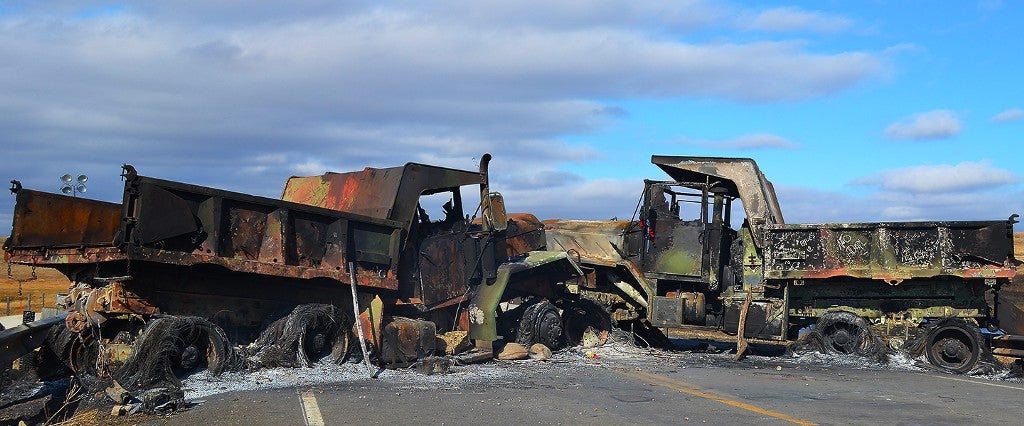It’s Halloween, and I’m standing on a bridge just north of where Highway 1806 passes north out of the Standing Rock Sioux reservation in North Dakota and crosses the Cannon Ball River, which empties into the Missouri River about half a mile to the east. The bridge is blocked by a burned-out car, two still-smoldering trucks with the words “Morton County” barely legible on their doors, and the remains of a torched lighting panel. Glass and ashes litter the road where earlier blockades were set alight. Over 140 people who call themselves water protectors were arrested here four days ago. It’s an almost perfect post-apocalyptic scene out of a seasonally appropriate horror movie, but it’s all too real.
We’ve joined the Oceti Sakowin (the Sioux term, meaning “the Seven Council Fires,” for the Sioux Nation) Camp, situated on the banks of the Cannon Ball. The land the camp occupies is currently controlled by the Army Corps of Engineers, relatively neutral ground for the time being — as the long-escalating battle between the Dakota Access Pipeline’s proponents and its protesters explodes into violence. It’s an eerie time to be here, as the several hundred people in camp are regrouping between clashes with private security forces and fully armed riot police; meanwhile, they’re also celebrating Halloween.
The water protectors have been here since April, blocking the oil pipeline company Energy Transfer Partners as it attempts to build the Dakota Access Pipeline, which would run nearly 1,200 miles from the Bakken oil fields in North Dakota to a river port in Patoka, Illinois. The pipeline would carry 470,000 barrels of crude oil per day at inception along a path that would take it beneath the Missouri River at Lake Oahe, just north of the Standing Rock Sioux reservation’s current boundaries.
But the water protectors, with backing from Standing Rock Sioux Tribal Chairman David Archambault II, have been resisting the efforts of Energy Transfer Partners to dig in the area. They cite the likelihood of the pipeline’s bursting into a waterway that provides clean water to their people — and millions of others as the Missouri flows southeast and eventually into the Mississippi — and they further invoke the fact that much of the contested land should, by rights, still belong to the Standing Rock tribe.
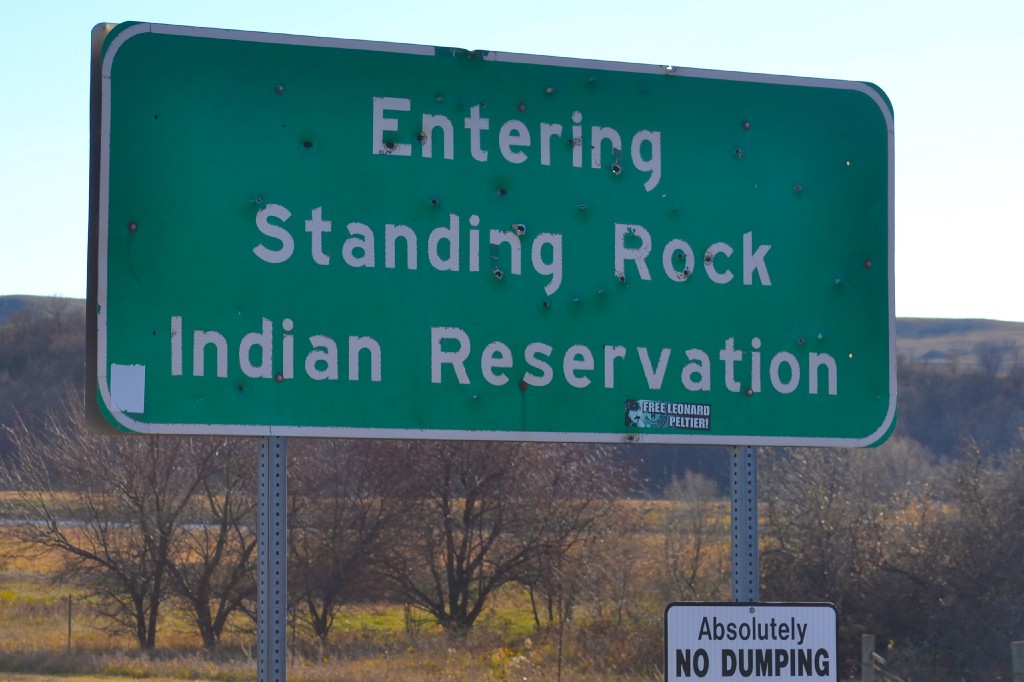
The pipeline was originally planned to run north of Bismarck, North Dakota’s second-largest city, but residents voiced concerns over possible contamination of their drinking water. In response, Energy Transfer Partners rerouted the pipeline to cross the river a half mile north of the Standing Rock Sioux reservation, a move the tribe has taken as adding hazardous insult to historical injury.
Increasingly, the protectors’ efforts have been met with violence from law enforcement and private security. Construction in the area began in August; by early September, Energy Transfer Partners had bulldozed a recently discovered ancient indigenous burial site. In response, protests increased in frequency and scope, culminating in private security’s use of attack dogs against water protectors in early September. In response to outrage over the violence, the Obama administration requested that the pipeline company voluntarily halt construction until federal agencies could conduct a more thorough review of the project’s proposed route, with an eye toward cultural sensitivity and environmental impact.
Energy Transfer Partners, however, ignored the request and accelerated the pace of construction, leading to more frequent, and more violent, clashes with water protectors in the ensuing months, despite an investigation by the UN and a visit from Amnesty International concerning human rights violations.
Now, on Halloween, there are plans for trick-or-treating for the children who attend school in a large green army tent in the center of camp; meanwhile, its residents are still recovering from the largest and most brutal confrontation thus far.
As construction approached the existing camp, water protectors erected the smaller 1851 Treaty Camp (named for the original Fort Laramie Treaty of 1851, which declared the land now in question part of the Great Sioux Nation — land that was never legally ceded by the tribe) nearby, directly in the path of the pipeline’s construction, on Energy Transfer Partners land, in late October.
Just days after the camp’s inception, on October 27, over 140 water protectors were arrested there during a police sweep. Bean bags were fired at their legs, rubber bullets at their heads and at their horses (one of which died); beatings were delivered with police batons, Tasers deployed, pepper spray and mace squirted in their faces, concussion grenades lobbed into their midst, a sound cannon aimed at their front lines, and protectors dragged out of prayer circles and sweat lodges during a sacred ceremony.
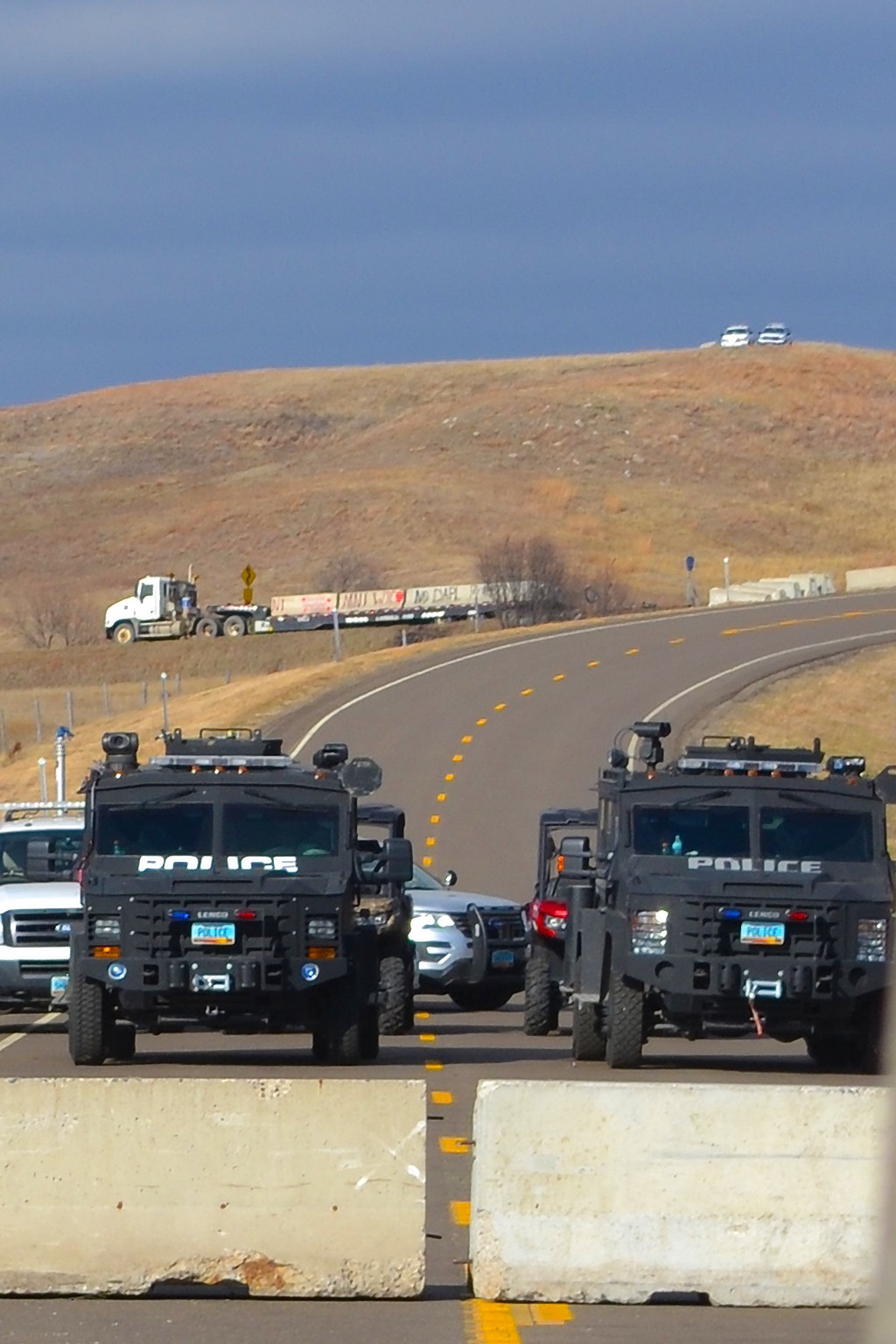
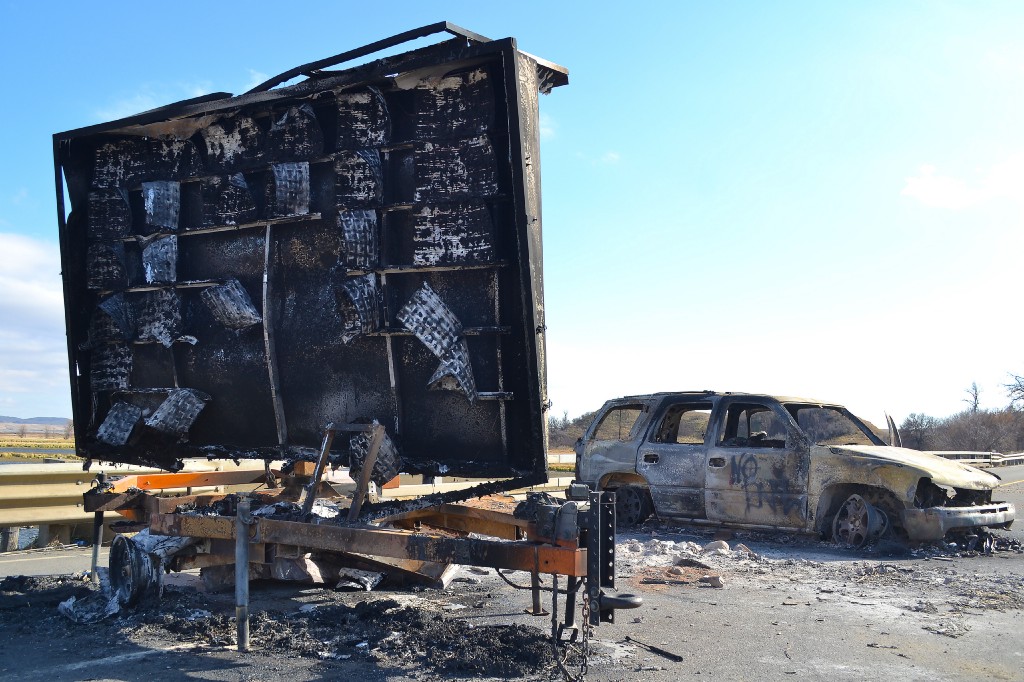
Just two days from my Halloween day at the camp, on November 2, water protectors by the dozens will wade, swim, and paddle across the Cannon Ball River to attempt to access a sacred burial site atop a nearby hill on Army Corps land. They will go there with the intention of praying, but they will met with brute force by law enforcement armed with familiar weapons. Over 100 will be treated by the camp’s inundated medics for their injuries. But on Halloween, the camp is quiet as the water protectors catch their breath.
Sage Robertson, a soft-spoken man of mixed tribal ancestry whose Ojibwa name, Bizaaniigawbaw, means “Quietly Standing Still,” has arrived back to camp today, his daughter’s birthday. He was arrested on October 27, he tells me, on charges of engaging in a riot, conspiring to commit arson, and resisting arrest.
“We were up there at the [1851] Treaty Camp in prayer,” he tells me. “Our intentions were always prayer.” When hundreds of police stormed the camp, he says, “They were in full-fledged riot gear. We were unarmed.” Robertson was helping to hold the front line as the police advanced, he says, “literally jumping in front of people who were being targeted by the cops.” He says that at one point, he saw a young girl being grabbed by police. “I jumped in and did an angry war whoop, and I could see in the cop’s face that he was scared. He let go of her.”
When he saw a prayer circle being formed by women and elders, he joined by sitting down and locking arms with them. “It was the locked arms, I think, that was considered resisting arrest,” he says. He was thrown to the ground on his stomach and his wrists were zip-tied so tightly that he tells me his thumb is still numb from the cut-off circulation. He was never read his rights. When he arrived at the Morton County jail for processing, he was strip-searched and then kept in a dog kennel for around an hour before being sent off to Stanton County, where he was held for three days before the camp’s legal team was able to post bail. (The camp’s legal defense fund had spent over $300,000 on bail for arrestees as of Halloween.) Robertson’s arrest number, 227, was written on his arm in black Sharpie and is still visible, along with part of the badge number of his arresting officer.
Despite his arrest and inhumane treatment, however, Robertson is back at Oceti Sakowin Camp, and he intends to remain there. “How long is the world going to watch?” he asks. “This is where we stop it, right here. We’re protecting water and life.”
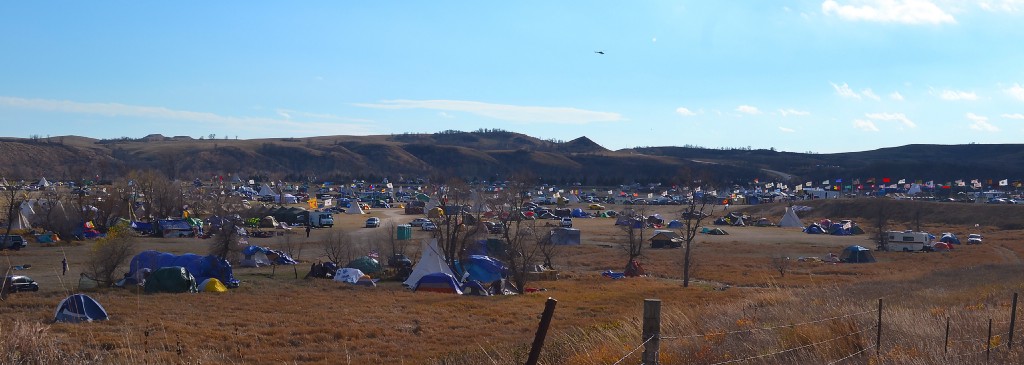

Even with the arrested making their way back to camp, water protectors remain on high alert. Many of those I speak to are wary of my press badge due to rumors that infiltrators from Energy Transfer Partners have posed as media in the camp, and have been responsible for violence on the part of the resistance during clashes with police. Some protectors tell us that the people who set the fire on the bridge and threw rocks during the October 27 incident weren’t familiar faces.
Stuart American Horse, a Standing Rock native, remembers a car full of strangers who stayed in camp for a time as press. As they prepared to leave, he says, they yelled, “Fucking Indians!” and took off toward the police lines. A canoe was found only that morning, abandoned by the shore of the river, and many in camp suspect that a mole hired by Energy Transfer Partners was sent to find out what actions are being planned, or to incite violence at the next meeting of police and water protectors.
Heightening the stress of recent events, a small propeller plane has been noisily circling the camp continuously since before dawn on the 31st, joined eventually by two helicopters that fly low overhead. They’ll continue to fly over the encampment throughout the night, edging away at the water protectors’ ability to sleep, as do the bright lights that shine from the construction site. By the night of November 2, these will be joined by floodlights aimed down at the camp from the surrounding hilltops. Around midday on Halloween, official-looking SUVs and the tiny forms of their faraway occupants begin to appear on the surrounding hilltops, clearly surveilling the camp.
Late that afternoon, as I’m watching a group of young trick-or-treaters in Halloween garb, a young man named Myron tells me that he and four companions just got back from swimming across the river to a hill to the northeast, where a burial site is located. They found a cadre of police armed with AR-15s watching the camp. “We told them to get out of that sacred site,” he said. “It was just four of us, and we were just in our swim trunks!” Their near-nakedness and the almost-freezing chill of the water notwithstanding, it appears to have worked — a glance at the skyline now reveals none of the SUVs or surveillance teams I saw before.

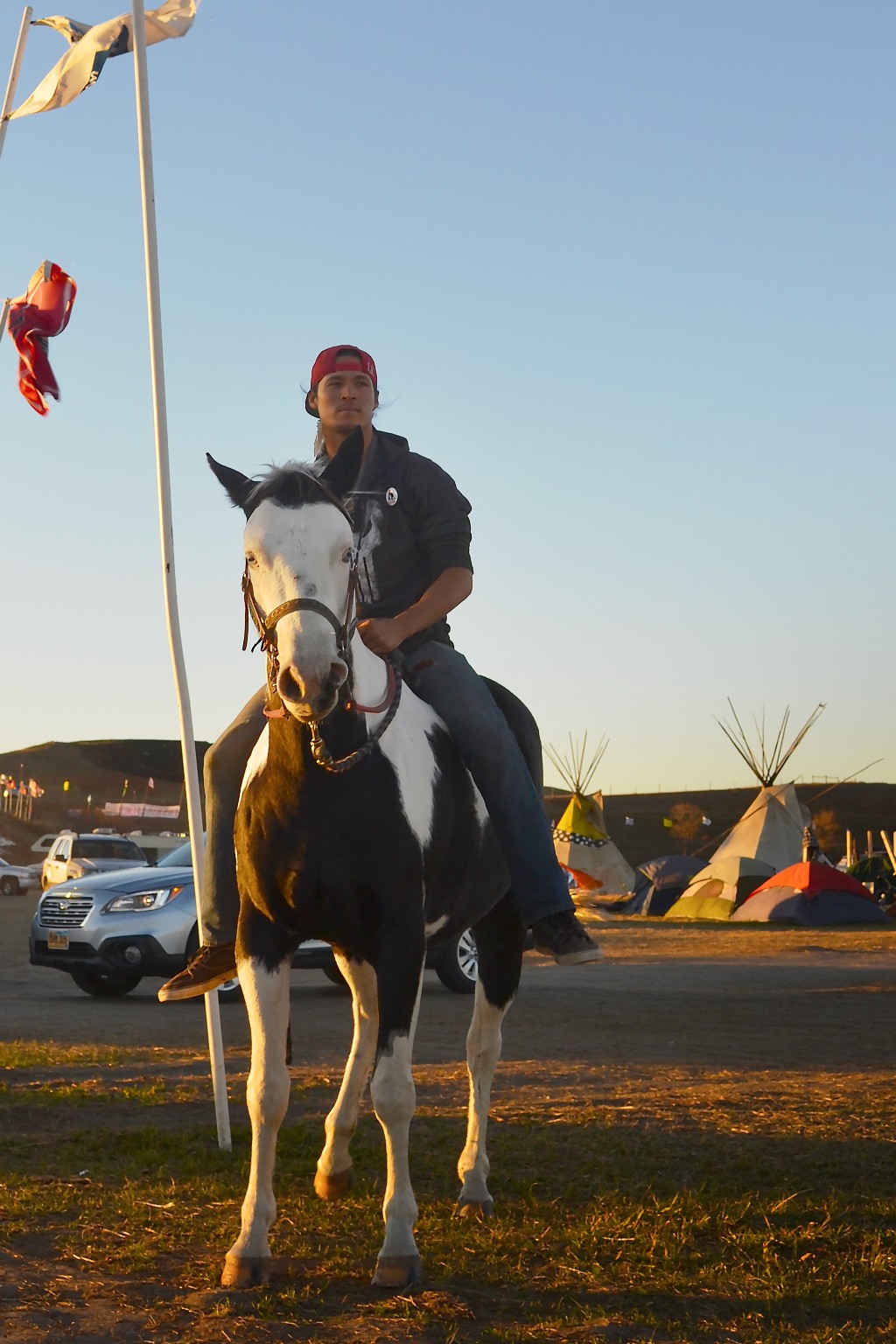
From the top of the hill at Sacred Stone Camp, situated on the south side of the river, I can see sections of pipeline laid out to the north, waiting to be put into the earth. The Dakota Access Pipeline in this area is being laid parallel to an existing natural gas pipeline called the Northern Border Pipeline, which Stuart American Horse says was constructed in this area in the 1970s, before 1978’s American Indian Religious Freedom Act allowed indigenous people in the United States access to religious sites and ceremonies. “They bulldozed right through our sacred sites back then,” he says, “but nobody could do anything about it” because of existing laws that prohibited indigenous people from practicing many of their most sacred rites.
American Horse grew up on the Standing Rock Sioux reservation, except for the years he spent in one of the notorious boarding schools where Native children were forced to assimilate to white culture. There, he tells me, he was beaten repeatedly. “They would take us into a little room and just beat the shit out of us,” he says, squinting into the sun. But aside from these early memories, he says, he lived a bucolic childhood on his family’s land near where the current conflicts are taking place.
“I have so many memories of this land, of swimming in the river, of hunting, of picking sage,” he says. “I’m fighting for my kids and their kids. They deserve to live that way, to swim and to hunt.” American Horse has been one of few native water protectors who’s happy to speak to the press, hoping that he can get the word out to the world. “If you write anything,” he tells me, “write that we need people here, on the ground. They keep arresting people and taking them off to jail, but they keep coming back. But we need more people here to fight for the water.”
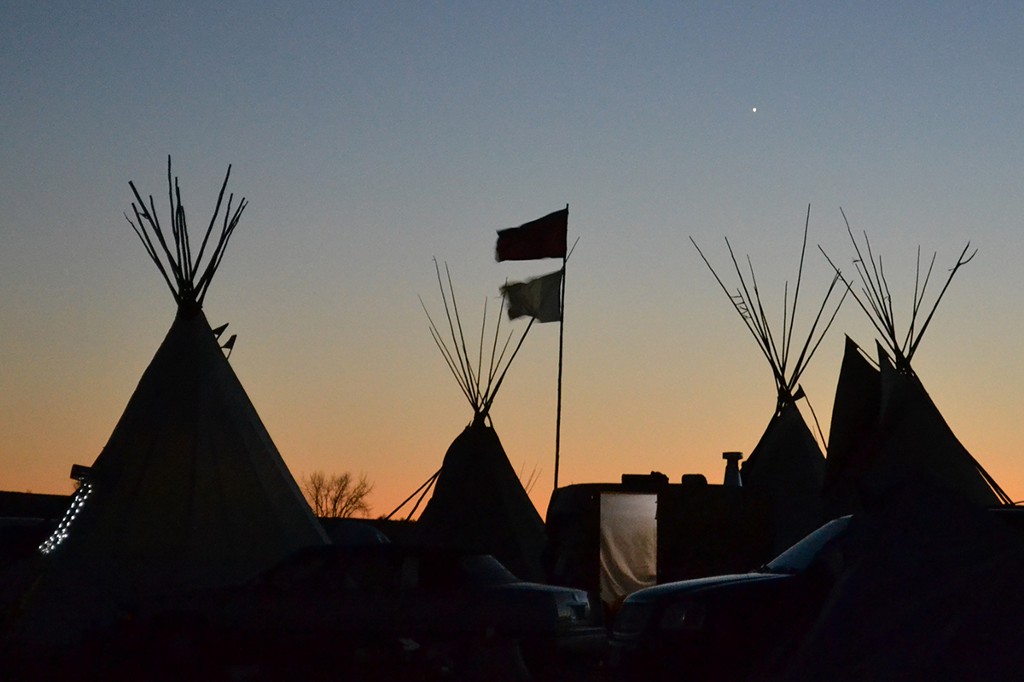
Since the events of October 27, new water protectors have been arriving from around the country and the world, eager to help. Sage Robertson tells me that in the few days he’s been gone since his arrest, the camp has already grown considerably. Many of the allies I speak to at the camp have arrived in the past several days, galvanized to action by the violence they saw in the news.
Awareness of the events at Standing Rock, though slow on the uptake, has spread like wildfire in late October and early November. Millions “checked in” to the Standing Rock reservation on Facebook in an effort to show solidarity with the cause and to confuse any police surveillance efforts. Protesters in New York City shut down Grand Central Station before marching on the headquarters of major banks. National media has begun to take notice. And President Obama has personally addressed the situation, saying that his administration is investigating possible ways to reroute the pipeline. Neil Young has released a new song, “Indian Givers,” about the situation, as have numerous younger artists like Tech N9ne and RedCloud.
In the meantime, hope and passion are sustaining the water protectors as they face down the long, freezing winter months on the prairies of North Dakota, where temperatures drop well below zero regularly.
The camp’s art tent is busy making banners, posters, and silkscreens to send out with water protectors to the front lines. Francisco Ormaza, a student who’s heading up the art-making process for the camp, says, “The media tries to dehumanize us, but when we have beautiful art, it shows our humanity. Art shows the heart of a human”—even when that human is being beaten by police batons.
The numerous kitchens around the camp provide three healthy meals a day to everyone at camp who needs food, free of charge. The medical and herbal healing tents continue to operate, along with the school. While I’m there, a truck arrives bearing 200 army surplus sleeping bags, which I help to unload along with dozens of other allies from around the country and the world. Meanwhile, a dome is being constructed as a central meeting place for the camp as winter sets in, and training is being offered on the construction of yurts, since several dozen are expected to arrive shortly. Occasional shouts of “Mni wiconi!” (“Water is life!”) break out and echo around the camp.
As the trick-or-treaters finish their rounds and night closes in, the bodies of two bison are brought into camp from the tribe’s nearby bison range. After elders have sung and prayed over them, water protectors go to work butchering them. An elder woman arrives on the scene as the organs are being divvied up, just in time to be sure that everything is treated properly, according to tradition. Nothing will go to waste, and the meat will be distributed to the hundreds of water protectors, fueling them in the difficult days to come.
The gruesome yet awesome spectacle of the animals’ splayed ribcages, their innards strewn across the ground, steaming into the dark night of the new moon, is appropriate for All Hallow’s Eve, but the singing, praying, and drumming that go on well into the wee hours of the morning are balm to campers’ nerves. The pending violence of November 2 is still a thing of the future, but plans are already being laid for what will come next, and the camp is standing strong.
Justice Fire, a bipolar-suicide-prevention counselor from New Jersey, calls the energy of the camp “soul-evolving.” “I’ve been an activist my whole life,” she says, “and when I was here last time, I felt like this camp is an example of what [humans] could be.”
Dan Hein, an ally from Columbus, Ohio, who was arrested on October 10 but who came straight back to camp and has been helping ever since, tells me, “I’m here because I think this is the beginning of the new world. And I think the new world will be led by indigenous people.”
